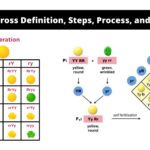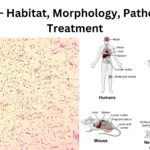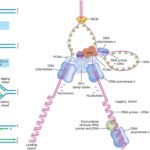IB Biology 13 Views 1 Answers
Sourav PanLv 9November 9, 2024
In what ways does auxin influence cell growth rates by altering gene expression?
In what ways does auxin influence cell growth rates by altering gene expression?
Please login to save the post
Please login to submit an answer.
Sourav PanLv 9May 15, 2025
Auxin, a crucial plant hormone, significantly influences cell growth rates by altering gene expression through various mechanisms. Here’s a detailed overview of how auxin achieves this:
1. Auxin Signaling Pathway
- Perception and Initial Response: Auxin is perceived by specific receptors, primarily the TIR1/AUXIN SIGNALING F-BOX (AFB) proteins. When auxin binds to these receptors, it triggers a signaling cascade that leads to changes in gene expression. This pathway involves the degradation of Aux/IAA proteins, which are transcriptional repressors that inhibit the activity of AUXIN RESPONSE FACTORS (ARFs), the key transcription factors in auxin signaling.
- Degradation of Aux/IAA Proteins: In the presence of auxin, the TIR1/AFB receptors facilitate the ubiquitination and subsequent degradation of Aux/IAA proteins via the 26S proteasome. This degradation releases ARFs from inhibition, allowing them to activate auxin-responsive genes.
2. Regulation of Gene Expression
- Activation of ARFs: Once freed from Aux/IAA repression, ARFs can bind to specific DNA sequences known as Auxin Response Elements (AuxREs) in the promoters of target genes. This binding activates the transcription of genes involved in various growth processes, including cell division and elongation.
- Target Genes: Auxin influences a wide range of genes that regulate cell cycle progression, such as those encoding cyclins and cyclin-dependent kinases (CDKs). For example, auxin promotes the expression of CycD and stabilizes E2F transcription factors, which are essential for transitioning cells from the G1 phase to the S phase of the cell cycle . This regulation is crucial for initiating DNA replication and cell division.
3. Influence on Cell Division and Elongation
- Differential Effects on Growth: Different forms of auxin can have distinct effects on cell division and elongation. For instance, synthetic auxins like 2,4-D primarily stimulate cell division, while natural auxins like NAA are more effective at promoting cell elongation at lower concentrations. This differential response is mediated through varying pathways and target genes influenced by auxin levels.
- Endoreduplication Control: Auxin also plays a role in preventing endoreduplication (a process where cells replicate their DNA without dividing), ensuring that cells maintain their ability to divide rather than becoming polyploid .
4. Integration with Other Signals
- Crosstalk with Other Hormones: Auxin does not act in isolation; it interacts with other plant hormones such as cytokinins and gibberellins to coordinate growth responses. For example, cytokinins can promote cell division in conjunction with auxins, while gibberellins may enhance elongation effects.
- Feedback Mechanisms: The regulation of gene expression by auxin is also subject to feedback mechanisms that ensure homeostasis in plant growth responses. Changes in environmental conditions can alter auxin production and sensitivity, leading to adjustments in gene expression patterns accordingly.
0
0 likes
- Share on Facebook
- Share on Twitter
- Share on LinkedIn
0 found this helpful out of 0 votes
Helpful: 0%
Helpful: 0%
Was this page helpful?




